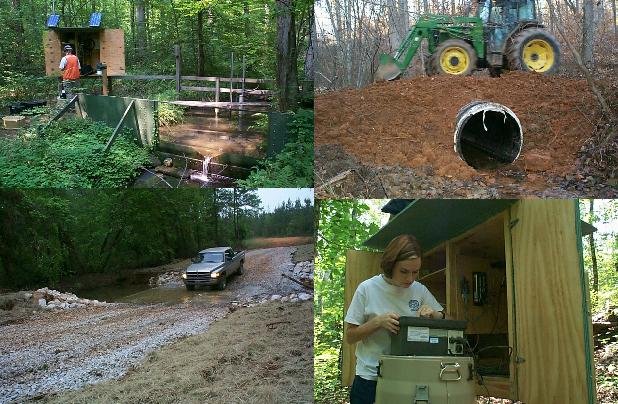



|
|
|
|
|

A cooperative effort by Auburn University's Biosystems Engineering Department and the USDA Forest Service Southern Research Station and its engineering research work unit in Auburn, AL.
Research has received primary funding from the USDA National Research Initiative Competitive Grants Program with supplemental funding from the USDA Forest Service and the Alabama Agricultural Experiment Station.
Project Cooperators include the Talladega National Forest (Shoal Creek Ranger District), Mead Corporation (Coated Board Division), and Caterpillar Corporation.
Investigators:
|
|
|
|
|
|
|
|
|
|
|
|
|
|
|
|
|
|
|
|
|
|
|
|
Objectives
The specific objectives
of this project are to:
1. Quantify and compare
water quality impacts from different types of stream crossings
2. Quantify the amount
of sediment produced by road approaches at stream crossing sites
3. Document life-cycle
costs of various types of stream crossings
Several fords, culverts, and bridges have been installed and monitored to determine the quantity of sediment introduced into streams by each crossing throughout their life cycle. Tests also are being conducted on new stream crossing alternatives such as portable bridges. The information resulting from this study will expand the database on water quality impacts and costs of different types of stream crossings. Also, when sediment production data from road approaches are compared with sediment production data from stream crossings, we can determine whether more efforts should be devoted to reducing sediment production from the crossings or from the road approaches to the crossings. This research will expand the database from which forest managers can make more rational decisions on which type of stream crossing to use when accessing our forests. More informed decisions on construction practices will lead to more sustainable forest access systems by reducing the introduction of sediment into forest streams.